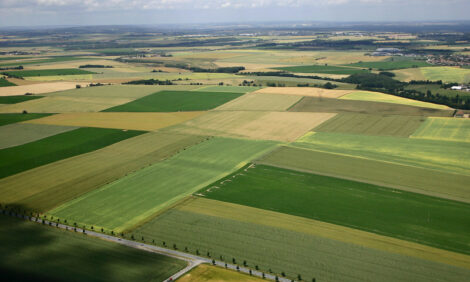



Look Out for Mycotoxins In Cattle Feed
US - Record October rainfall plus cool weather has increased risk for mould development in corn, and telephone calls to the University of Illinois have increased with questions from producers on how to best deal with this risk.Mouldy corn reduces bushel weight, corn quality, nutrient content, and increase the risk of mycotoxin formation
"Mycotoxins are toxic substances produced by fungi or moulds that grow on grain or feed in the field or in storage. Mycotoxins associated with cool and wet conditions are zearalenone, T-2 toxin, umonisin, and deoxynivalenol, also called DON or vomitoxin," explains Mike Hutjens, Extension dairy specialist.
Aflatoxin is another toxin but is associated with hot weather and drought stress conditions, so it has not been a problem this year.
"Signs of mycotoxin in dairy cattle include rumen disorders and reduced microbial digestion, loose fecal discharges, reduced dry matter intake, decline in fertility, hormonal-like changes such as udder development and fertility, and immune suppression where cattle do not respond to disease challenges," Mr Hutjens adds.
The following are mycotoxin risk levels for dairy cattle, expressed on a total ration, dry-matter basis.
- DON (vomitoxin); less than 5 to 6 parts per million
- Fumonisin; less than 25 ppm million
- T-2 toxin; less than 100 to 200 parts per billion
- Zearfalenone; less than 300 parts per billion
- Aflatoxin; less than 20 parts per billion
If you are concerned that mold risks could be a problem, the first recommendation is to test the feed. Tests can be expensive and sampling and feed variation can reduce the usefulness of the results.
"Adding a mycotoxin binder can reduce the impact of toxins by reducing their impact in the digestive tract and/or not absorbed. Binders include yeast cell wall extracts or MOS products and clay binders," Mr Hutjens said.
High moisture corn could increase the risk of addition mold grow until the pH of the fermented corn drops. But drying corn below 15 percent moisture stops further toxin development.
"Adding a grain inoculant to speed up fermentation and stabilize the wet corn is recommended. And steers can tolerate higher levels of problematic feed than young animals and pregnant cattle," Mr Hutjens said.
Removing fines, damaged seeds, and cracked corn kernels can reduce toxin risk. And the reverse is that, if you purchase corn screenings, you can expect higher levels of mycotoxins.
"Also, distillers grain produced from ethanol production can concentrate the level of toxins in the feed," Mr Hutjens said.
Finally, adding propionic acid at the time of ensiling can reduce mold development in wet corn.
TheCattleSite News Desk


